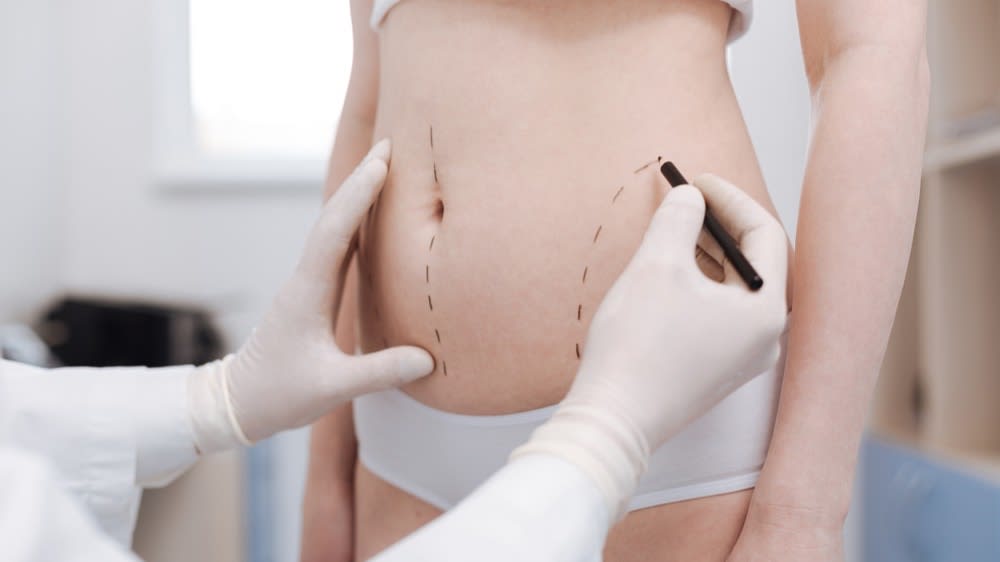Fat transfer surgery, also known as fat grafting or fat injection, is a popular cosmetic procedure that uses your body's own fat to enhance or restore volume in various areas. By harvesting fat from one part of the body and reinjecting it into another, this surgery offers a natural alternative to synthetic fillers and implants. If you're considering fat transfer surgery, here’s what you need to know about the process, benefits, risks, and recovery.
How Fat Transfer Surgery Works
Fat Transfer Surgery in Dubai involves three main steps: fat harvesting, purification, and injection. Here’s an overview of the procedure:
- Fat Harvesting: The surgeon will first use liposuction to remove fat from areas where there is excess fat, such as the abdomen, thighs, or flanks.
- Purification: Once the fat is harvested, it undergoes a purification process. This step ensures that only healthy, viable fat cells are used for the transfer.
- Injection: The purified fat is then injected into the target area, such as the face, breasts, buttocks, or hands, to restore volume or enhance contour.
Because the fat comes from your own body, there is minimal risk of allergic reactions or rejection.

Who Is a Good Candidate for Fat Transfer Surgery?
You may be a good candidate for fat transfer surgery if you have excess fat in certain areas and are looking to enhance volume or contour in others. Ideal candidates are generally healthy, non-smokers, and have realistic expectations for the outcome of the procedure. Common areas for fat transfer include:
- Face: To restore youthful volume and smooth wrinkles
- Breasts: For natural breast augmentation
- Buttocks: For enhancement, often referred to as a "Brazilian butt lift"
- Hands: To rejuvenate aging hands by adding volume and reducing the appearance of veins
Additionally, if you are looking for a natural alternative to implants or synthetic fillers, fat transfer surgery is an excellent option.
The Benefits of Fat Transfer Surgery
Fat transfer surgery offers numerous benefits that make it an appealing choice for many patients:
- Natural Results: Since the procedure uses your own fat, the results tend to look and feel more natural compared to synthetic implants or fillers.
- Dual Benefit: The surgery provides a two-in-one benefit by both removing fat from areas where it’s unwanted and adding volume where it’s needed.
- Minimal Scarring: The liposuction and injection procedures involve only small incisions, resulting in minimal scarring.
- Long-Lasting Results: With proper care, fat transfer results can be long-lasting. While some of the injected fat may be absorbed by the body over time, the remaining fat cells typically remain in place permanently.
Common Areas Treated with Fat Transfer Surgery
Fat transfer surgery is versatile and can be used to treat various parts of the body. Common treatment areas include:
- Face: To restore volume in the cheeks, under the eyes, and in the lips. Fat transfer can also help reduce wrinkles and fine lines.
- Breasts: For a more natural breast augmentation or to correct breast asymmetry.
- Buttocks: To enhance the shape and size of the buttocks, often referred to as a Brazilian butt lift.
- Hands: To restore volume to aging hands and reduce the appearance of veins and tendons.
Risks and Considerations
While fat transfer surgery is generally considered safe, there are potential risks and complications to be aware of:
- Fat Absorption: Some of the transferred fat may be absorbed by the body over time, which can reduce the volume of the treated area.
- Infection: As with any surgical procedure, there is a risk of infection, although this is rare when performed by a qualified surgeon.
- Asymmetry: In some cases, uneven fat absorption can lead to asymmetrical results, which may require additional treatments to correct.
- Fat Necrosis: This occurs when some of the fat cells die after the transfer. While uncommon, it can cause lumps or firmness in the treated area.
To minimize the risks, it’s essential to choose a board-certified surgeon with experience in fat transfer procedures.
Recovery After Fat Transfer Surgery
Recovery from fat transfer surgery varies depending on the areas treated and the amount of fat transferred. Here’s what to expect during the recovery process:
- Swelling and Bruising: It’s normal to experience swelling and bruising in both the donor and recipient areas for a few days to weeks after surgery.
- Downtime: Most patients can return to work and light activities within one to two weeks, but strenuous activities should be avoided for at least four to six weeks.
- Final Results: The results of fat transfer surgery become more apparent as the swelling subsides, which can take several weeks. The final outcome is usually visible after about three to six months.
Following your surgeon’s post-operative care instructions is crucial for a smooth recovery and optimal results.
Fat Transfer Surgery vs. Synthetic Implants
One of the key advantages of fat transfer surgery is that it uses your body’s natural fat instead of synthetic implants. Here’s how fat transfer compares to synthetic implants:
- Natural Look and Feel: Fat transfer provides a more natural look and feel compared to implants, as it uses your body’s own tissue.
- Lower Risk of Rejection: Since the fat comes from your own body, there’s no risk of rejection or allergic reaction, which can occur with synthetic materials.
- Minimal Scarring: Fat transfer involves small incisions, resulting in less visible scarring compared to the larger incisions needed for implant placement.
- No Maintenance: Unlike implants, which may require replacement after several years, fat transfer results can be long-lasting without the need for future surgeries.
However, fat transfer may not be suitable for patients looking for a more dramatic volume increase, as implants can provide more predictable and substantial results.
Long-Term Results of Fat Transfer Surgery
The results of fat transfer surgery can be long-lasting, especially if you maintain a stable weight. However, it’s important to note that not all of the transferred fat cells will survive. Typically, about 60-80% of the fat will successfully integrate into the new area. Once the fat establishes a blood supply, the results are generally permanent. To maintain the best outcome, follow a healthy lifestyle and avoid significant weight fluctuations, as this can affect the volume of the transferred fat.
Combining Fat Transfer with Other Procedures
Fat transfer surgery can be combined with other cosmetic procedures to enhance overall results. Some popular combination procedures include:
- Facelifts: To restore facial volume while tightening sagging skin.
- Liposuction: For more comprehensive body contouring, fat transfer is often paired with liposuction to sculpt the body.
- Breast Lifts: Fat transfer can be combined with a breast lift to both lift and enhance breast volume.
Combining procedures allows patients to achieve multiple aesthetic goals with a single surgery and recovery period.
Choosing the Right Surgeon
Choosing a skilled, board-certified plastic surgeon is one of the most critical factors in achieving successful fat transfer results. Look for a surgeon with extensive experience in fat grafting procedures, and review their before-and-after photos to ensure they deliver the type of results you’re seeking. During your consultation, discuss your goals, concerns, and expectations to create a personalized treatment plan.
Conclusion
Fat transfer surgery offers a versatile, natural, and effective solution for those looking to enhance their appearance by adding volume and contour to different areas of the body. With benefits such as natural-looking results, minimal scarring, and long-lasting effects, it’s no wonder that fat transfer has become an increasingly popular choice in cosmetic surgery. By understanding the process, risks, and recovery involved, you can make an informed decision about whether fat transfer surgery is the right option for you.





Comments